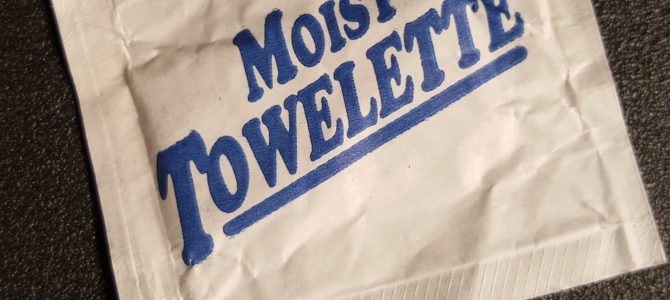A question (01.04.18):
I’m looking for ability to confirm the DOT rating for particular product we have currently started to make. Is this something you’re able to help provide assistance/training?
I’m here to help, so my reply (01.05.18):
Yes. I can assist you with that.
If you are able to provide a safety data sheet (SDS) or some other technical information I will be happy to provide you with a “snap” classification at no charge.
If you decide to proceed a more formal classification can be provided under my consulting services for a fee.
He was OK with free advice:
I’ve attached two SDS for 70% IPA canister products. The only different to the two products would be the number of wipes in each canister. I believe the classification should be UN3175 – class 4a which one states but the other states UN1987 class 3. The IPA is fully absorbed into the fabric in each product which is why I’d think the classification should be a haz solid. Thank you in advance for any assistance.
Thanks
(SDS’s for two different wipes, both saturated with Isopropanol were attached)
|
Interested in a Webinar that covers this topic, and more! |
My final answer (01.05.18):
Thank you for contacting me. I will try to answer your questions below.
- I assume this classification is for the transportation by ground or rail within the U.S. International transport and transport by other modes will require a separate classification. However, I am confident the classification will remain the same.
- Isopropyl alcohol is a Class 3 flammable liquid.
- The wipes are best classified as: UN3175, Solids containing flammable liquids, n.o.s. (Isopropyl alcohlo) 4.1, PG II
- However special provision 47 in column 7 of the Hazardous Materials Table for this entry reads in part (last sentence):
Small inner packagings consisting of sealed packets and articles containing less than 10 mL of a Class 3 liquid in Packing Group II or III absorbed onto a solid material are not subject to this subchapter provided there is no free liquid in the packet or article.
Therefore, as long as both products meet the requirements of special provision 47 (small sealed packets with no free liquids), they are not subject to the USDOT Hazardous Materials Regulations and are not a hazardous material when offered for transportation.
I hope this helps.
|
Contact me with any questions you may have about the transportation of hazardous materials by air, highway, vessel, or rail International and Domestic Daniels Training Services, Inc. 815.821.1550 |
Conclusion:
I never heard back so I can only assume all went well. Here we have a perfect example of someone offering for transport a product as a hazardous material (subject to increased shipping and handling costs) when a perfectly good exception from regulation exists. If applicable (and in this case I believe it is) the exception has the potential to save this business a lot of money. Of course, USDOT/PHMSA HazMat Employee training is still required but that is a small price to pay for compliance and the knowledge that comes with it.
